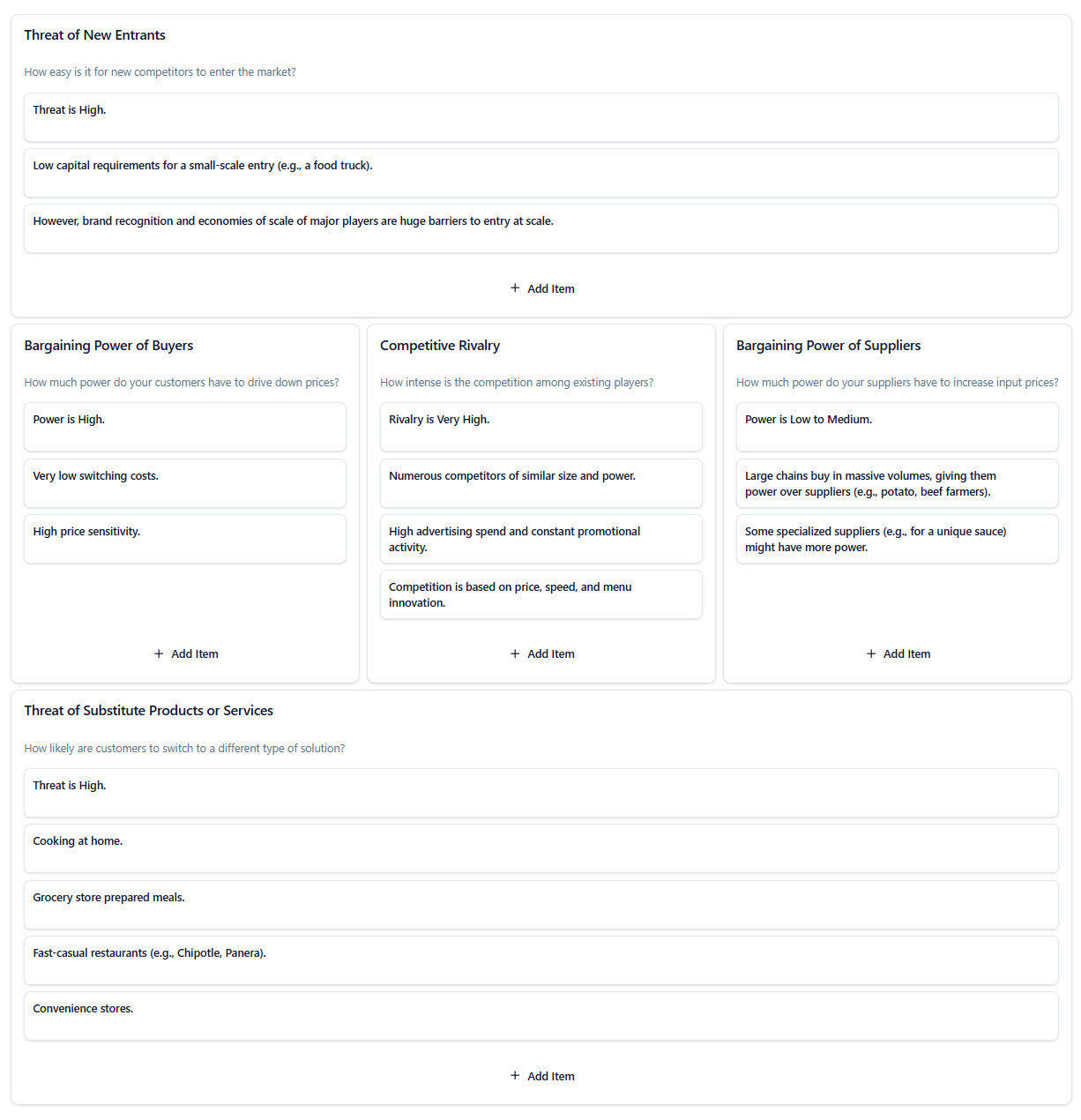Industry Analysis
Fast Food Industry (e.g., McDonald's, Burger King)
An analysis of the competitive landscape of the global fast food industry.

Analysis & Interpretation
Background
This analysis of the fast-food industry reveals a mature, saturated market where competition is fierce and margins are thin. It’s a classic example of an industry where operational efficiency and brand strength are paramount for survival.
Key Strategic Insights
- High Buyer Power Dictates Strategy: With very low switching costs and high price sensitivity, the ‘Bargaining Power of Buyers’ is the dominant force. This explains the industry’s reliance on value menus, promotions, and a constant drive for convenience.
- Scale Neutralizes Supplier Power: While the industry relies on commodity ingredients, the immense purchasing volume of major chains gives them significant power over their ‘Suppliers’. This ability to control input costs is a key competitive advantage for large players.
- Intense Rivalry and High Threat of Substitutes: The combination of ‘High Rivalry’ among chains and a ‘High Threat of Substitutes’ (from fast-casual to cooking at home) means fast-food companies are fighting a war on two fronts. They must not only compete with each other but also stay relevant against a broad array of meal options.
Strategic Summary
The fast-food industry is a tough, competitive environment where brand recognition and operational scale are the keys to success. Profitability is driven by volume and cost control. Strategic focus must be on maintaining brand relevance through marketing, innovating on the menu to keep customers engaged, and optimizing the supply chain to protect thin margins.
How This Canvas Was Built
This example shows how AI and visual tools combine to create a clear, data-driven view of market competition using Porter’s Five Forces.

AI Competitive Analysis
The AI analyzed industry data to outline key insights for supplier power, buyer power, rivalry, new entrants, and substitutes.

Visual Coordination
Color coding clarified each force, while tags connected related factors to reveal their market impact.

AI Review for Strategy
After the canvas was completed, the AI highlighted competitive rivalry as the main area requiring strategic focus and differentiation.
Explore and Adapt
Open this canvas example to adjust timelines, experiment with AI prompts, and create a launch plan that fits your product goals.
